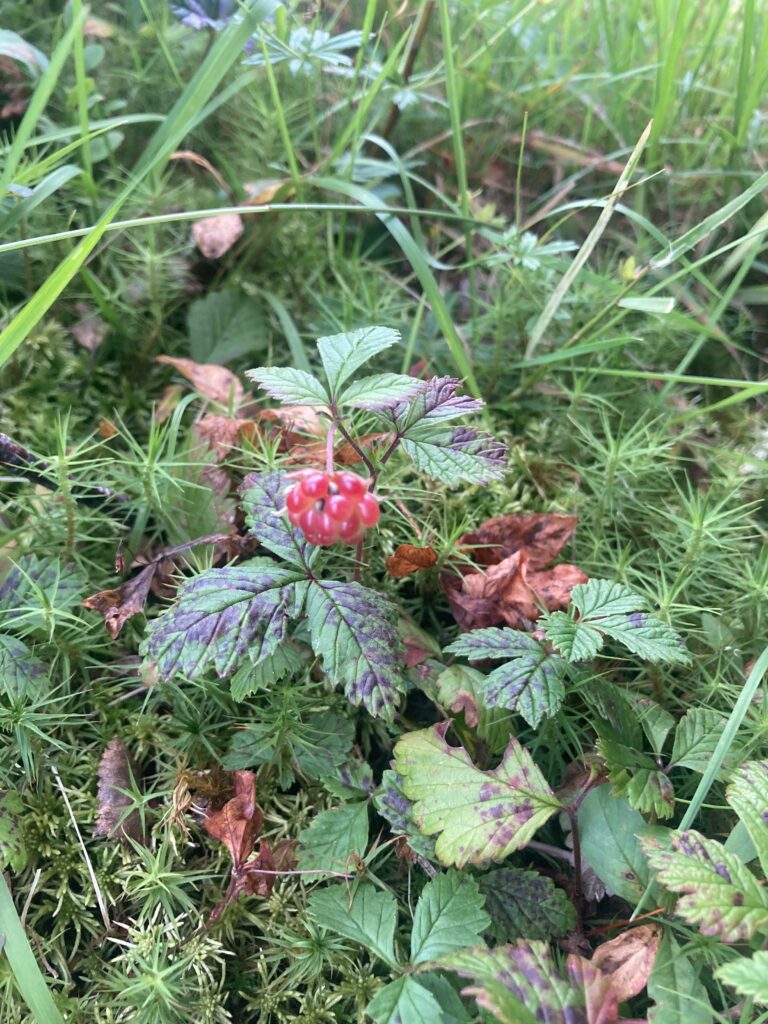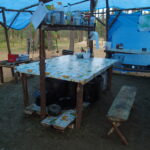This year I’ve spent 3 weeks in Sweden, most of it in Lapland, the northernmost part of the country. The climate is quite harsh there — it’s a lot colder than in my homeland and the ground is barren, making it very hard for the plants to grow. However, this doesn’t mean those woods are devoid of food. There are plenty of berries and mushrooms, also some edible lichen and wild leaf vegetables. Today I want to show you some edible berries I’ve found in Sweden this year. If you go to Lapland in August / early September, you’ll probably find them too.
Blueberries (Vaccinium myrtillus)
Very popular wild berries that can be found mostly anywhere in Central Europe. Their small, dark purple berries are sweet and a bit sour. They are also a very strong dye — their juice will stain your mouth and skin, and you can use them to dye your clothes purple. Blueberries also have some medicinal properties — they are used to cure diarrhoea and to get rid of parasites.
In Sweden, those berries grow everywhere! Sometimes fruits can grow as large as a fingernail, which is very uncommon in the southern regions where the berries typically remain much smaller. When I was hiking through marshland, the raised, dry areas were so full of berry-laden shrubs that I could pick handfuls of berries just from the place where I was sitting.
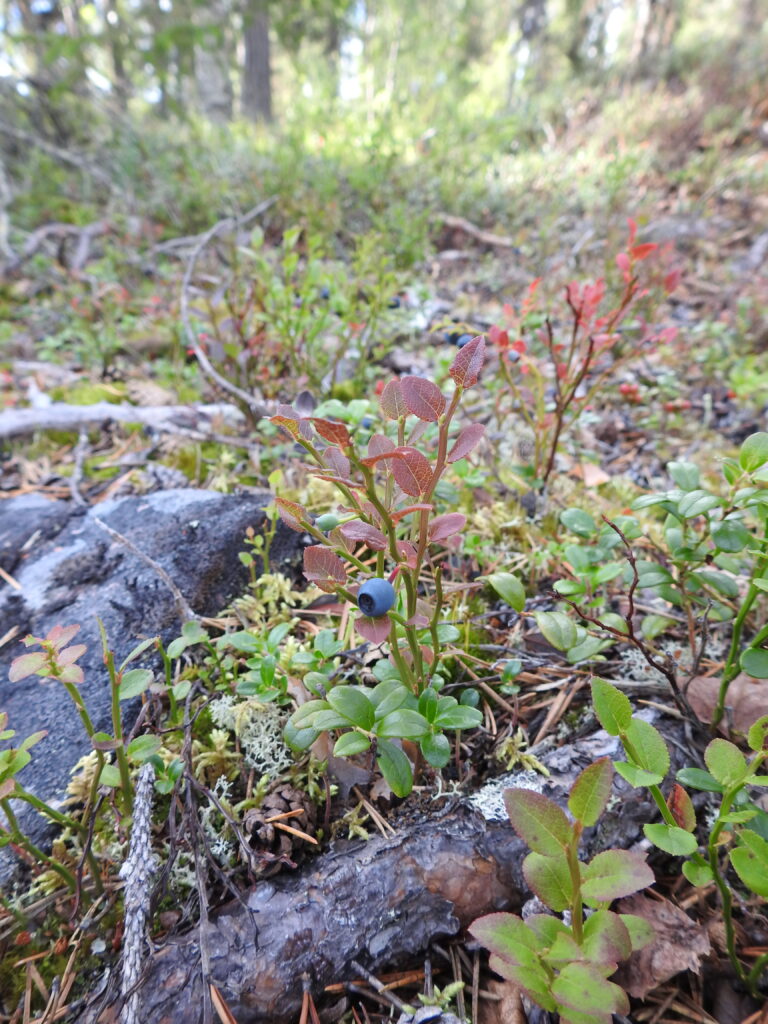
Lingonberries (Vaccinium vitis-idaea)
Those small, red berries ripen later than blueberries. Lingonberry is not so sweet, mainly bitter and sour with a slight touch of sweetness. They’re still a very tasty snack, but can also be a great addition to meat dishes. In Sweden, it’s also quite common to drink beverages made with lingonberry juice — they taste great both hot and cold.
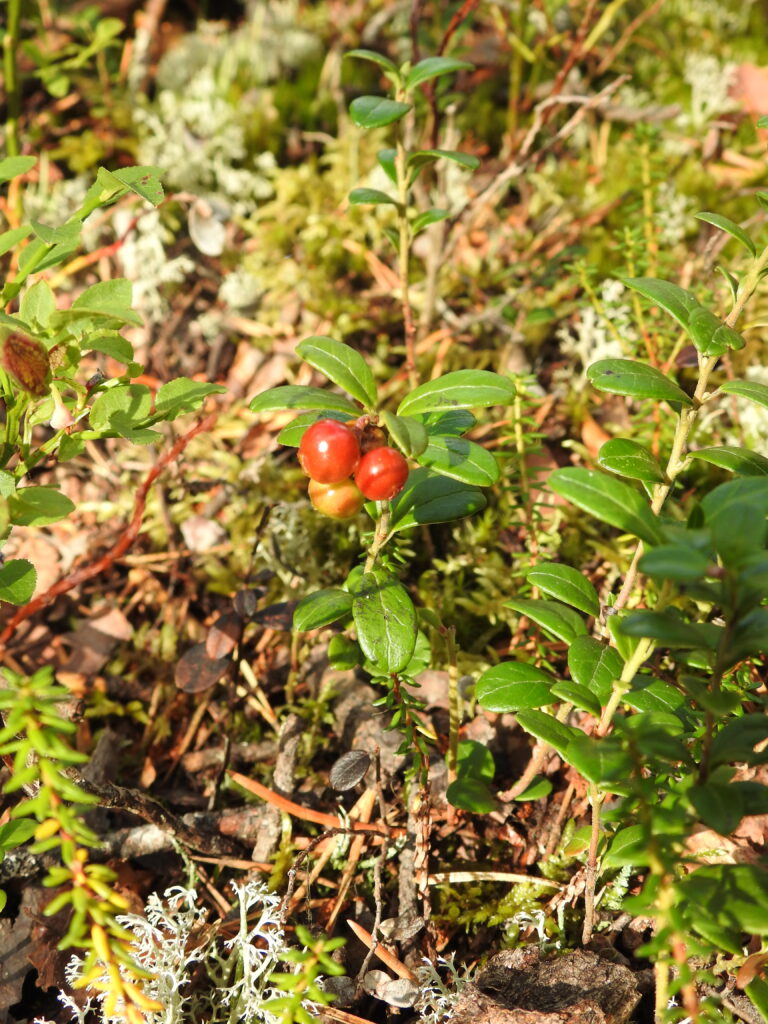
Black Crowberry (Empetrum nigrum)
It grows mainly near marshes in the north. It’s a creeping plant with tiny scale-like leaves and small, black, shiny berries. Crowberry is bitter and a bit sweet, but the taste is quite watered down. However, it’s not the taste that makes crowberry special. The berries are so juicy that when you bite them, they pop inside your mouth, unleashing all the juices they have. It’s a really nice sensation.
Black crowberry is a kind of forest superfood. It contains plenty of vitamin C and antioxidants. It can also be used to cure diarrhoea and it seems to be more efficient than blueberries. You can also use the crowberry plant to produce aromatic smoke — to repel mosquitoes or to flavour your food while smoking it. Crowberry is a very resilient plant that can grow in very harsh conditions. This fact makes it one of the most important food sources in the Arctic.
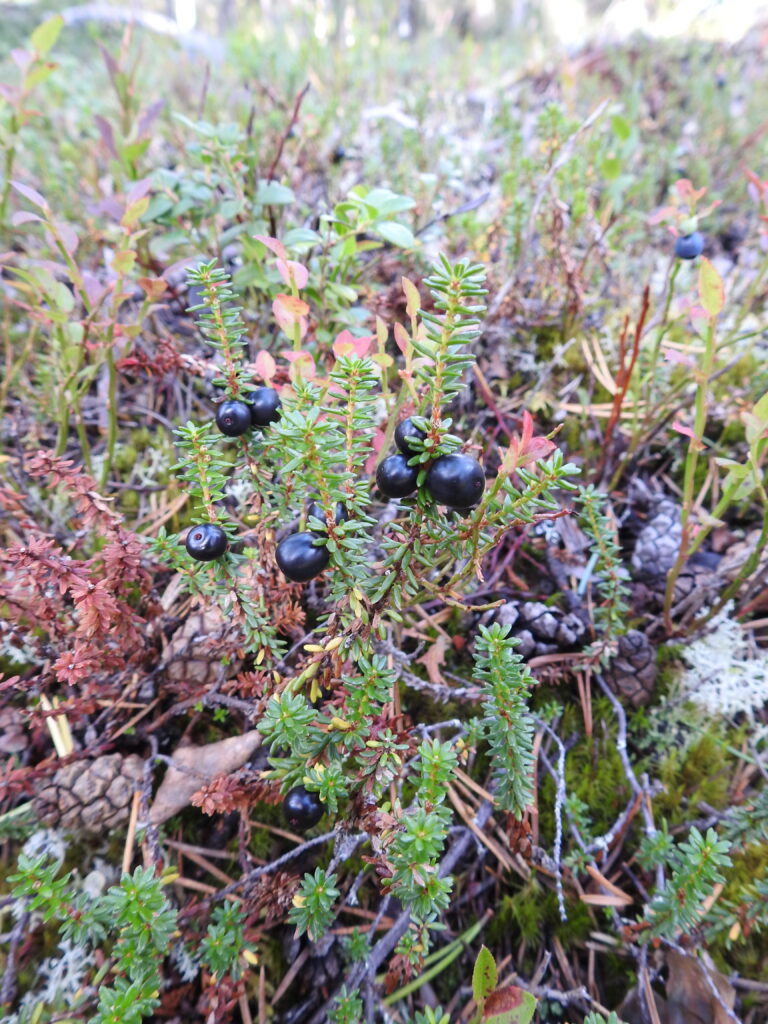
Dwarf Cornel (Cornus suecica)
It grows in very humid places, mainly near streams and lakes. Dwarf cornel leaves and flower/fruit arrangement makes the plant very distinctive and easy to identify. The berries are mostly tasteless, just slightly sweet. I couldn’t find much information about their nutritional or medicinal values. It was consumed by Inuit people of Greenland. The fruit contains quite a lot of pectin. Dwarf cornel is definitely not the best berry of the subarctic, but rather one to remember in case of hunger.
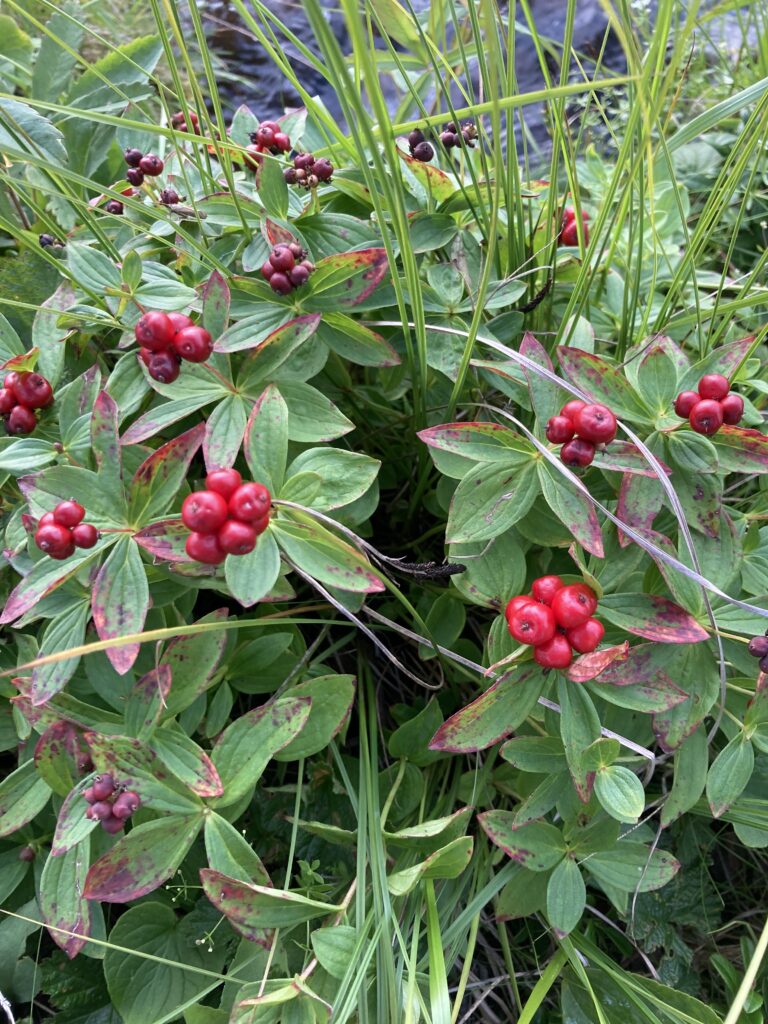
Bog Blueberry (Vaccinium uliginosum)
It can be found on rocky islands and patches of dry ground near marshes and bogs. Its stems are more wood-like than those of Vaccinium myrtillus , and the leaves have a different, greyish hue of green. Berries are light grey-blue and have colourless flesh. It’s very common for the shrubs to produce plenty of fruit.
Bog blueberry is my most beloved wild berry by far! The fruit is sweet and bitter, slightly sour, and just has a lot more character than the common blueberry. North American Indians used dried bog berries when making pemmican. There is also a chance to get high after eating them — fungal infections or a sediment of marsh rosemary pollen covering the fruit can cause similar symptoms to drunkenness when consumed in large amounts. People who experienced it describe that feeling as very unpleasant.
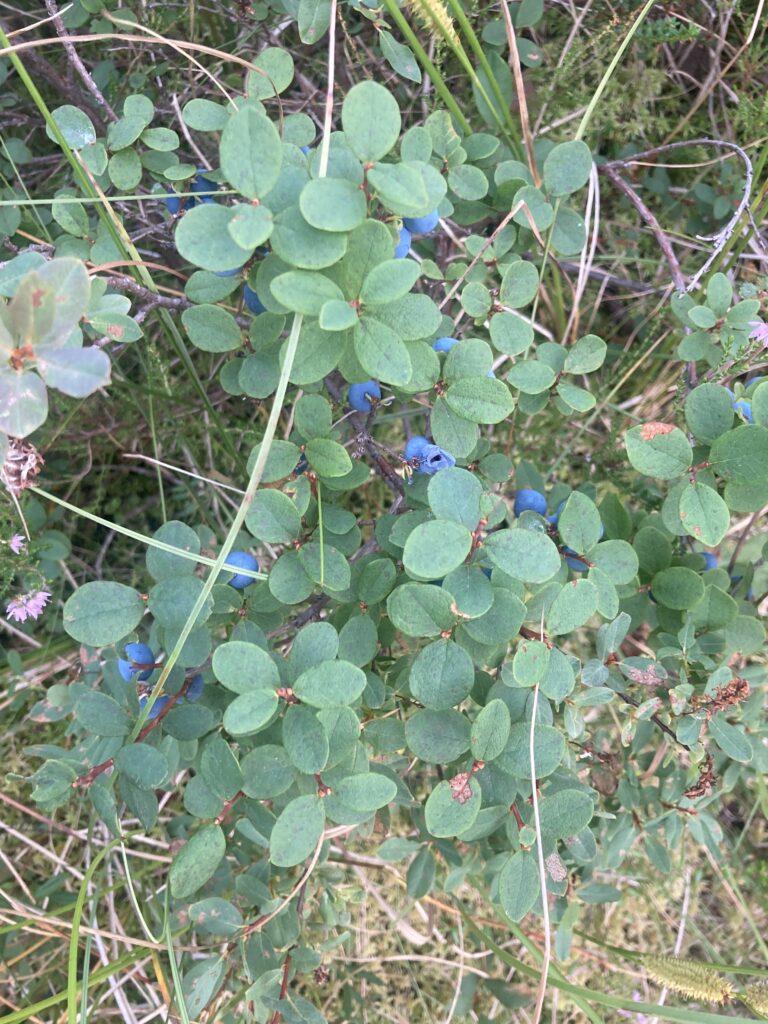
Cloudberry (Rubus chamaemorus)
It’s a very interesting plant, growing low to the ground, with fruit similar to a small raspberry. The fruit colour hues vary from deep red to yellow — the yellower it gets, the more ripened it is. You can find it in marshes and bogs, mainly near sphagnum moss.
Cloudberries are rich in vitamin C and they taste like raspberry gummies — seriously! They are great for making preserves — you can process and store cloudberries without any sugar added, cause the natural chemical compounds will be enough to preserve them. They are very valuable to the local people because of the vitamins and flavonoid compounds.
